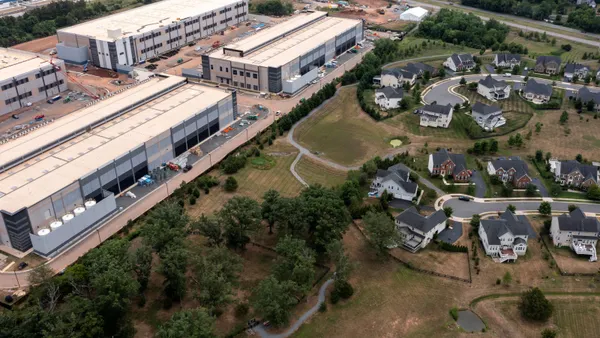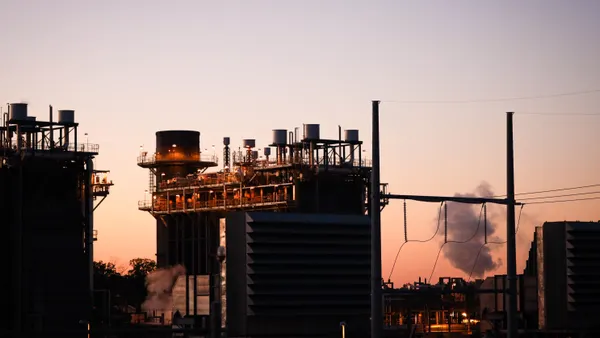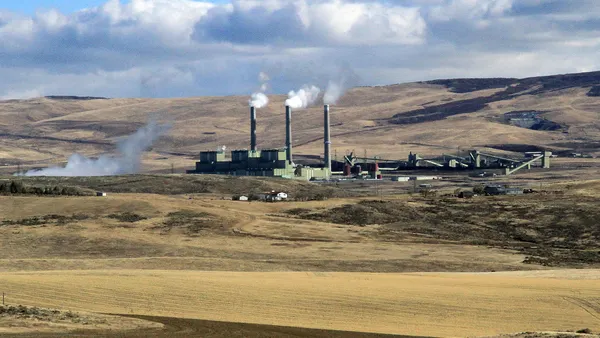Dive Brief:
-
Two Wisconsin coal plants cost Alliant Energy's Wisconsin customers $16 million in 2019 alone, according to a report released Tuesday from the Sierra Club.
-
Alliant on Friday announced it plans to retire one of those facilities — the 380 MW last remaining unit of its Edgewater plant — by 2022. However, the 1,023 MW Columbia coal plant has no set retirement date, and if it continues to operate the utility's share of the plant could cost customers $257 million through 2030, according to Sierra Club.
-
The report does not take into account costs imposed on customers from retiring the plant before it is fully depreciated, Sue Tierney, senior advisor at Analysis Group told Utility Dive, which would likely lower the benefit to customers. But Sierra Club points out the clean energy portfolio scenario they demonstrate is still ultimately the lowest-cost option.
Dive Insight:
Coal-fired power plants have become increasingly less economic to operate as they struggle to compete with lower-cost wind, solar and natural gas.
Vertically-integrated investor-owned utilities (IOUs) are some of the least-economic plant operators, according to previous Sierra Club research, because they're able to recover market losses through the rate base. This is because the business model of those utilities relies in part on keeping its investors happy and ensuring minimal risk of financial loss, said Tierney, while at the same time regulators can either force the company to swallow its investment or allow it to be recovered through the rate base.
"You can imagine the Chief Financial Officer of the company feeling like until they know regulators will let them get this money, it's too risky for them, financially, to make the decision," she said.
There is the potential for Sierra Club and others to make the argument to the Public Service Commission (PSC) that an IOU did not make prudent investment decisions when it came to continuously operating its plant, and that could change how much a utility like Alliant would swallow or recover costs, said Tierney.
One such case is playing out in Indiana — Sierra Club testified to state regulators in April that Indianapolis Power and Light paid $1.55 million more than it should have through November and December of 2019 by running its 1,720 MW Petersburg coal plant continuously during a time of depressed energy prices.
In the case of Alliant, Sierra Club found the Columbia plant exceeded the market price for energy 75% of 2019, yet continued to operate at a 50%-55% capacity factor.
"In other words, the plant operated for many hours in which it lost revenue," the report said. "It only earned net positive revenues from the energy markets in three of five years between 2015 and 2019. In fact, 2018 was the only year when those revenues could comfortably cover its fixed operational costs."
Alliant disputes this characterization of its Columbia and Edgewater plant operations.
"The Sierra Club's analysis relies on broad assumptions and information that is not entirely accurate. Their modeling does not fully capture how our generating units are dispatched, either as a result of market requirements or to provide the best long-term results for our customers," spokesperson Scott Reigstad told Utility Dive in an email.
"Coal-fired plants have long ramp-up and ramp-down times, which from a practical perspective means they cannot easily operate only during times when they are ‘in the money,'" he said. "Moreover, regularly turning coal plants off and on causes wear and tear and risks damaging them, which would cause higher costs in the long-run."
Essentially, the question for regulators is whether the plant is "economically used and useful," said Tierney. An analysis such as Sierra Club's could be used to suggest regulators "kick the plant's dollars out of rate base if they are not making prudent decisions about shutting it down and it's no longer a net positive for consumers," she said.
That's exactly the scenario that will happen if the three co-owners of the Columbia plant — Alliant, Madison Gas and Electric and Wisconsin Public Service — don't retire the plant by 2026, John Romankiewicz, senior energy analyst at Sierra Club and co-author of the report told Utility Dive.
One of the paper's key points is determining when building and operating a clean energy portfolio of renewables, energy efficiency and demand response is cheaper than keeping the existing coal plant open. The group finds that by 2026 "you have the sunk coal cost in both cases, but going forward clean energy is the cheaper option for customers," Romankiewicz said.
"The treatment of these stranded assets through a tool like securitization could provide additional customer savings on top," he added. "We decided to leave it out of this analysis, as Sierra Club already plays a role in convening a separate group of utilities, PSC staff, and other stakeholders to discuss solutions to this stranded assets topic."
Along with the Edgewater plant, Alliant also has plans to retire two gas-fired power plants and add another 1,000 MW of solar to its resource portfolio. Alliant on Tuesday announced plans to add six projects totaling 675 MW of solar as part of its 2023 goal, which Sierra Club and Alliant agree is a key step toward reaching a more ambitious clean energy goal.
"These two announcements are a major part of our Wisconsin Clean Energy Blueprint to advance the transition from coal to renewable power, while avoiding over $2 billion in customer costs over the long term," said Reigstad.
The Edgewater retirement in particular "is a significant development," Elizabeth Katt Reinders, deputy director of the North Central region for Sierra Club's Beyond Coal campaign told Utility Dive. "We're really happy to see that."
Between the Edgewater retirement and a scenario where the utility chooses to retire the Columbia plant in the next 5-6 years, plus the loss of 197 MW in gas peaker plants, Alliant would lose a total of 1,238 MW. But under the lowest cost clean energy assessment, the utility could add 137 MW of solar, 303 MW of wind, 92 MW of battery storage, 107 MW of energy efficiency, and 70 MW of demand response for every 225 MW of coal replaced.
"Currently, the cost of building this CEP is higher than the cost of operating the coal plant (largely because battery storage is still relatively expensive), but based on industry projections of the costs of storage and renewables, we have determined that it would be lower by the year 2026," the group found.
Essentially, Alliant could be a lot more ambitious with its current goal of reducing greenhouse gas emissions 80% and retiring all its coal-fired power plants by 2050, said Romankiewicz. Retiring both coal plants would likely lead to a 50% reduction in greenhouse gas emissions, meaning that Sierra Club "would be fairly confident saying they could push for 80% by 2030," he said. "And that's essentially the direction that we need to be heading for ambitious climate action if we have any chance of a two degree scenario."
Alliant agrees it could be more ambitious now that the economics of clean energy has changed.
"Our carbon reduction targets were established several years ago. Since that time, generation economics have changed, more customers have established sustainability goals and there continue to be improvements in renewable technology," said Reigstad. "We are reassessing our carbon reduction targets and our forecasted future generation mix and are excited to share this information with you in the coming months."














